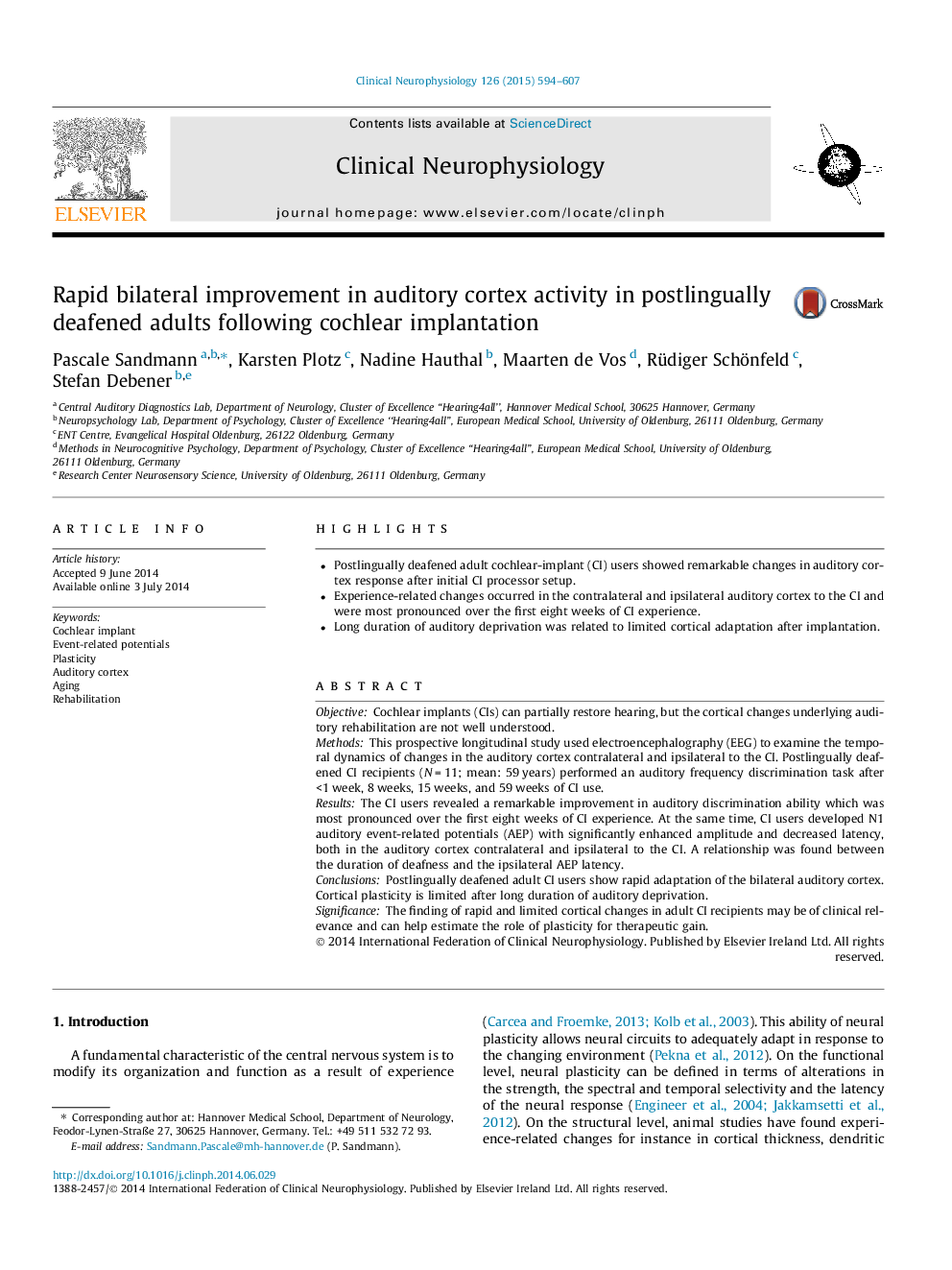| Article ID | Journal | Published Year | Pages | File Type |
|---|---|---|---|---|
| 3043720 | Clinical Neurophysiology | 2015 | 14 Pages |
•Postlingually deafened adult cochlear-implant (CI) users showed remarkable changes in auditory cortex response after initial CI processor setup.•Experience-related changes occurred in the contralateral and ipsilateral auditory cortex to the CI and were most pronounced over the first eight weeks of CI experience.•Long duration of auditory deprivation was related to limited cortical adaptation after implantation.
ObjectiveCochlear implants (CIs) can partially restore hearing, but the cortical changes underlying auditory rehabilitation are not well understood.MethodsThis prospective longitudinal study used electroencephalography (EEG) to examine the temporal dynamics of changes in the auditory cortex contralateral and ipsilateral to the CI. Postlingually deafened CI recipients (N = 11; mean: 59 years) performed an auditory frequency discrimination task after <1 week, 8 weeks, 15 weeks, and 59 weeks of CI use.ResultsThe CI users revealed a remarkable improvement in auditory discrimination ability which was most pronounced over the first eight weeks of CI experience. At the same time, CI users developed N1 auditory event-related potentials (AEP) with significantly enhanced amplitude and decreased latency, both in the auditory cortex contralateral and ipsilateral to the CI. A relationship was found between the duration of deafness and the ipsilateral AEP latency.ConclusionsPostlingually deafened adult CI users show rapid adaptation of the bilateral auditory cortex. Cortical plasticity is limited after long duration of auditory deprivation.SignificanceThe finding of rapid and limited cortical changes in adult CI recipients may be of clinical relevance and can help estimate the role of plasticity for therapeutic gain.
